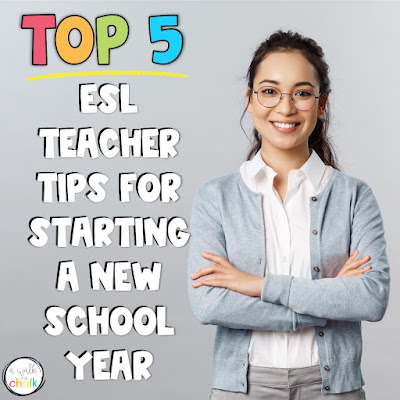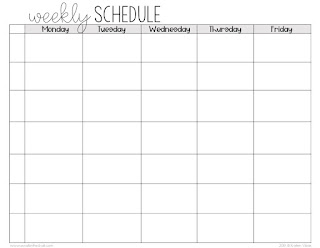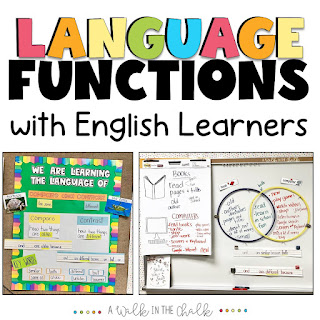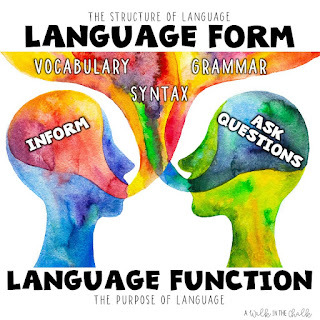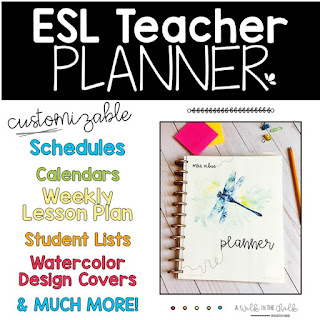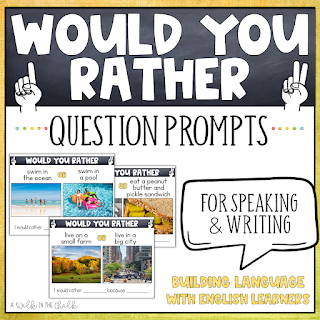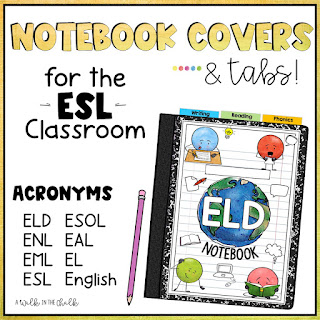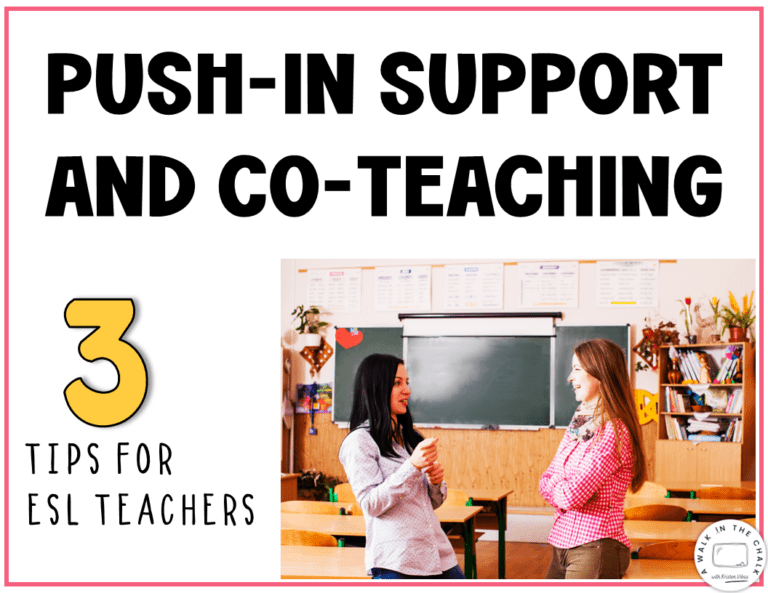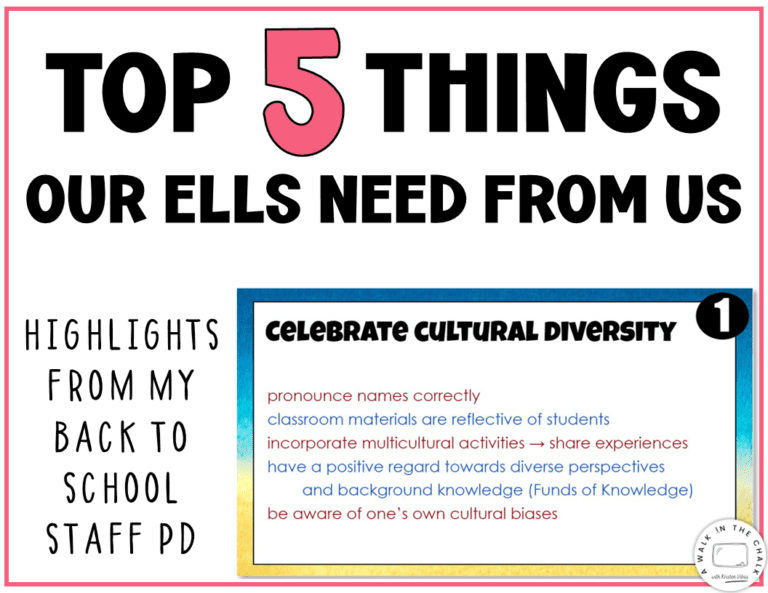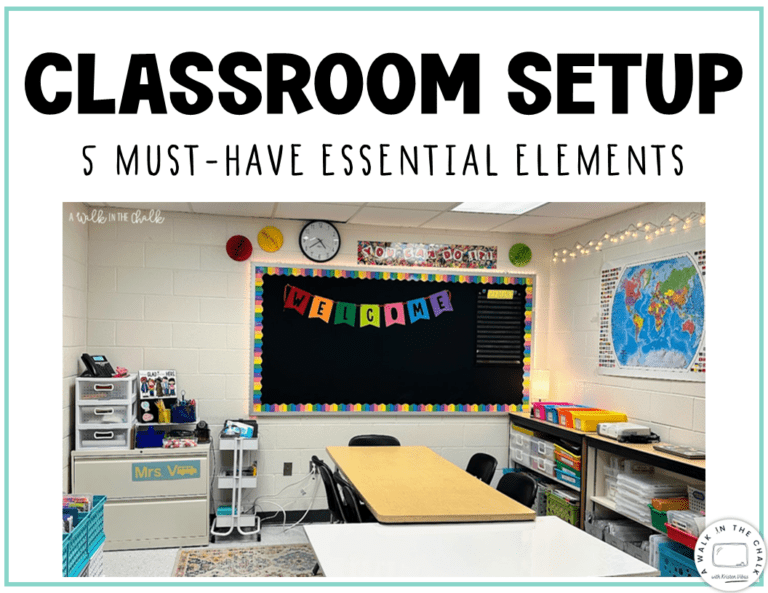I remember being a new ESL teacher, I really had no clue where to begin. Thank goodness I had an amazing mentor and roommate; without her I would’ve been completely lost. Each school district is different, so you may be required to do certain tasks at the start of each year, but as a seasoned ESOL teacher, here are my top 5 ESL teacher tips for starting the school year off strong.
Where to Begin the Year – ESL Edition
Teachers in my district head back to school a week prior to students. The week is filled with meetings, professional development, Open House and squeezing in time to set up instructional spaces. During this hectic week it’s also important to find out who my English learners are, who the classroom teachers are that I’ll be collaborating with, and to think about routines and procedures I want in place for my ELD instruction.
Week 1 – Prior to Students Arriving at School
Get your hands on a student list. The list should include important information such as grade level, classroom teacher, ELP level and home language. Sometimes I need to ask the registrar at my school for a list, but most of the time I can find it on my district’s EL database site. You’ll also want a list of ELP scores from last year (preferably from the past two years) so that you can analyze student proficiency levels AND growth in each language domain. This is key in determining strengths and areas of need.
Once you have your student lists, you can begin thinking about how you want to group your students. In my district, I have the autonomy of grouping my students the way that best targets their needs. Some schools/districts group students for you AND make your schedule, giving you no control in these two areas. If you are able to group your own students, I like to group based on language need with about 6 students per group. When I have small homogeneous groups, it allows me to really target students’ linguistic needs.
I usually use something like this to map out my groups.
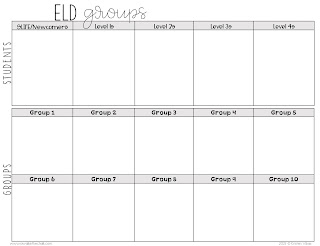 |
| Students and ELD Groupings |
Once I have my groups, which I try not to have more than 10 groups in all, I then I create an initial instructional schedule. That’s really a whole other post in itself! It’s probably one of the most challenging tasks of the year. Considerations include the master instructional schedule, specials, lunch & recess schedules, as well as gen ed classroom focus minilessons because we don’t pull students out during their focus lessons. There’s a LOT to consider when creating an effective instructional ELD schedule.
I use something like this to map out my draft schedule.
You’ll likely need to tweak your schedule at some point, so keep in mind that it might change as the needs of students change. Both of these pages are from my ESL Teacher Planner, linked at the bottom of this post.
Recap Week 1 – get student lists that include the information you need to help create homogenous groups, as well as your instructional schedule.
Week 2 – Students First Week of School
Students arrive, so now what happens? I do not start my pull-out schedule on day one. IMO, It’s important for students to stay in their gen ed classrooms and get settled, even for the first few days. They are building a classroom community, learning procedures and getting acquainted with their new setting.
My district does kindergarten K-WAPT testing the first week, so I might not start my ELD schedule until the end of the week. I do push-in though the first few days, when I can, and introduce myself to my students, give them resources such as bilingual dictionaries, as well as a vocabulary workbook to my newcomers. And check in on teachers, especially if they have newcomers in the class!💛
Once I start pulling my groups, the focus is all about Getting to Know You. I really take time this week and next to start building relationships with my students. On my first day with students I share a slide that tells about me and my family. I also share things that I like doing outside of school. Then we go around the group and give each student time to share about them.
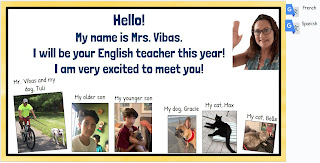 |
| Introduction Slide |
It’s incredibly important to build trust with students, so really take this time to get to know them as individuals. It’ll pay off big time.
Some of my favorite “Getting to Know You” activities are…
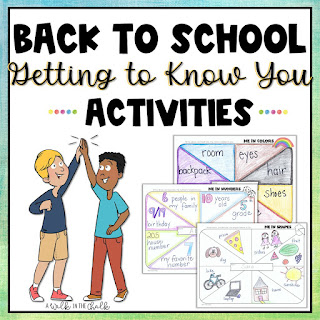 |
| Getting to Know You Activities |
 |
| Four Corners Activity |
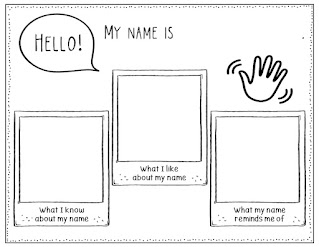 |
| Teach Us Your Name – FREEBIE |
👉Additional Getting to Know You activities and resources will be listed at the bottom of this post.
Recap Week 2 – let students get settled into their general education classrooms, then start meeting with your students/groups. Introduce yourself and focus on getting to know them as individuals. Start building trust.
Week 3 – BOY Assessments
Once students have been in school a week or so, and we’ve started getting to know each other, it’s now time to get to know them better as learners. What can students do at this point in time? I have their ELP scores from the previous two years, but that data is not recent, and they’ve been out of school for a couple of months, so where are they now in their language proficiency? The goal – to find their instructional “starting points.”
The main assessments I do at the beginning of the year are…
Newcomer Group/Level 1 Students – a phonics assessment. Do they know their letter sounds? Which sounds do they know? It’s also important to know the literacy level of newcomers in their native language. Do they have age appropriate literacy skills or do they have gaps? Have them write in their native language. Find a book in their native language and let them read it to you. Don’t have books available? I often write a message using google translate, then have them read it to me. Did they understand the message? Where they able to respond to it? It’s important detective work. 🕵️♀️
 |
| Phonics Survey for Level 1-2 Students |
All of my groups, except for maybe my newcomer group, write to a prompt. This allows me to analyze their writing skills. The BOY prompt is usually, “Describe a place you like to visit. Tell what you like to do there.” We brainstorm possible places, then I have them write for about 20 minutes. Afterwards, I collect their writing and take anecdotal notes on skills we need to focus on in that group.
 |
| Beginning of the Year Writing Prompt |
My school district gives assessments, most of which I’m not a big fan of, that include iReady for reading, PRF for fluency and DSA for spelling.
We used to give the DRA2 reading assessment to find the instructional reading level of each student, but we no longer do that, so it’s been an adjustment trying to figure out where my kids are in that particular area. The best way, for now, is to listen to them read and check for comprehension.
Each data point is a small piece to a much larger puzzle. With all of the assessments listed above, especially my own, I usually have a pretty clear picture of starting points. 👍
Recap Week 3 – take time to assess students so that you know what they can do AND what they need. Finding their starting points will be critical in knowing what to teach them.
Week 4 – Routines, Procedures and Planning ELD Lessons
It’s not until THIS point that I begin planning ELD lessons. Now I know my students better, both as individuals and as students, I’ve built some trust with getting to know you activities and I’ve assessed their needs, so NOW I can plan lessons to better suit them.
But WAIT! There’s one more important item to do before diving into planning! For me, I need to decide which on-going activities I want certain groups to do and then teach them the expectations.
What’s an on-going activity? It’s a skill based weekly activity, such as phonics, grammar, idiom, sight word, writing, etc., that has a procedure needing to be taught or modeled. I definitely don’t rush this. This is a big part of routines and procedures! Some of my groups (level 1 & 2 students) have a weekly phonics minilesson and activity, for example. I set this up for success by teaching students the components and expectations of the activity. We set up their ELD Notebooks and I model each expectation. This is really important, IMO, for a successful year.
 |
| Modeling Expectations for Word Work |
 |
| Weekly Phonics Word Work Activity-Student Notebook |
Pretty soon, the on-going activity becomes a very familiar part of their class time with me.
If I want my newcomers doing something in their general education classrooms during independent class time, like a vocabulary workbook activity, I need to take the time to teach them how to do that.
Here’s a post about planning these types of weekly activities!
Once I’m done teaching expectations for on-going activities, THEN I’m ready to plan targeted ELD lessons! 👏
Recap Week 4 – teach routines & procedures- identify on-going activities for groups and model expectations. Start to plan & prepare targeted ELD lessons based on students’ linguistic needs.
Bottom line… there’s a lot to do at the beginning of the year before targeted ELD lessons begin. But at this point, I’m in a MUCH better position to plan lessons that meet the needs of my students.
At about 4 weeks into the school year, it’s time to plan and prepare materials for my first language function unit… the language of INQUIRY.
Here’s my post on Language Functions. It explains what a language function is, how to plan a unit and why I love teaching functions.
This next post on “Forms and Functions” dives a little deeper into the language forms that accompany language functions. Check them both out!
My advice for starting a new school year, do not stress about what you’re going to teach the first couple of weeks of school. There are many other priorities that require time and attention. I promise you that spending time getting to know your students both as individuals and as learners before you plan lessons will only enhance your ability to target your instruction, which will ultimately get students to the next level in language proficiency. And that’s the goal! 🙌
Additional resources that help get my year started.👇
Best of luck to you on a smooth back to school season. Having plans in place for a strong start will set you and your students up for a very successful school year!
Take care,


Affiliate Links: My Amazon Storefront
